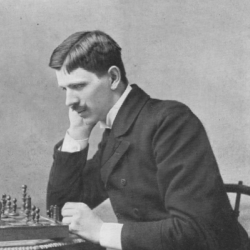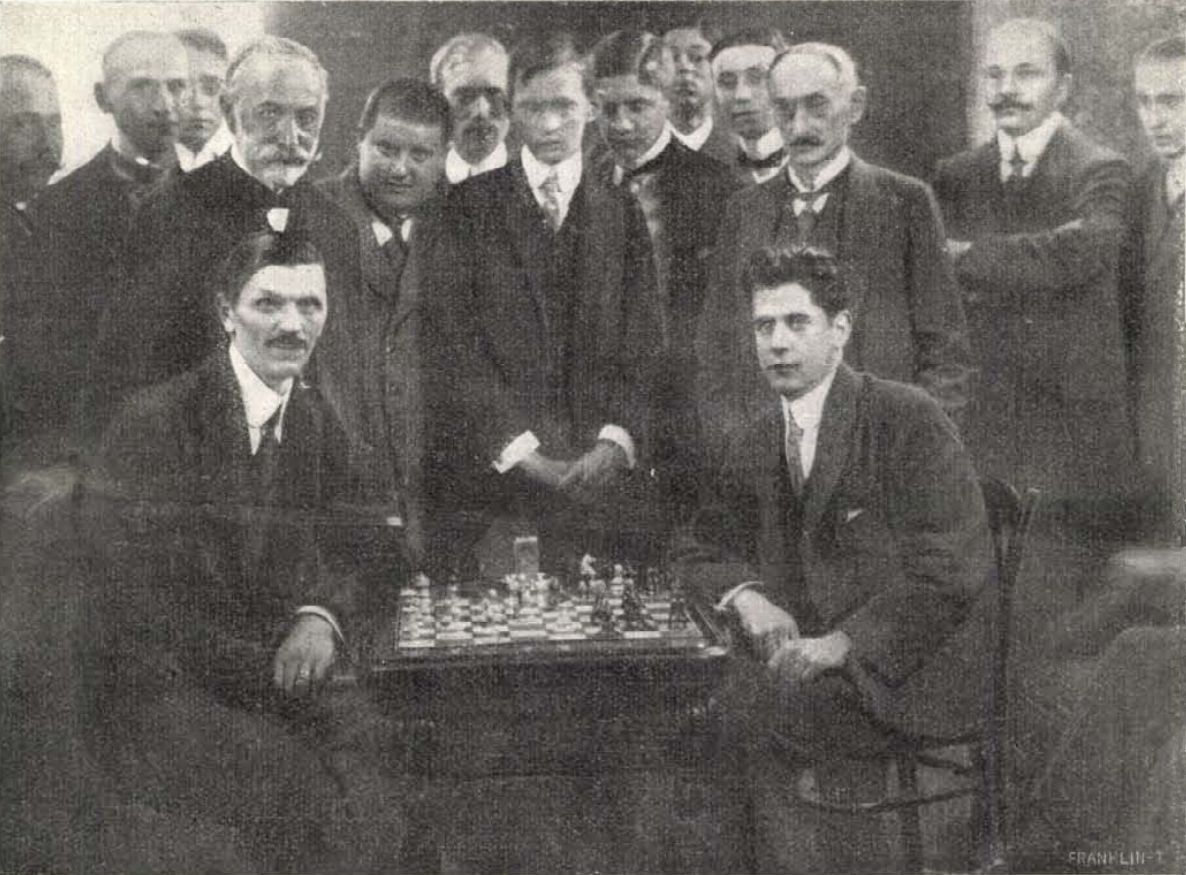GM Geza Maroczy

Bio
Geza Maroczy was a Hungarian grandmaster and a world-class player. One of the first players to be awarded the title of grandmaster, he led the Hungarian team that won the first Chess Olympiad in 1927. Maroczy was also the chess teacher for Vera Menchik (the first women's world champion) and is best known for the "Maroczy bind"—a pawn structure for White against the Sicilian that is still quite popular today.
Style
Maroczy was a well-rounded player and was considered a defensive genius. A very strong tactical player, his defensive and positional style enabled him to shut down many tactical-minded opponents. He was adept in the endgame and had a particular strength in queen-and-pawn endgames, and he won one of his most famous games in this fashion. In this game Maroczy sacrifices piece after piece before forcing mate against Mikhail Chigorin (a famous world-class tactician).
From Amateur To World Championship Contender
Maroczy's first tournament success was winning the British amateur championship, held in Hastings during the historical 1895 Hastings tournament (he did not play in the main tournament, which was won by Harry Nelson Pillsbury ahead of Mikhail Chigorin, the reigning world champion Emanuel Lasker, former world champion Wilhelm Steinitz and others). Between 1895 and 1902, Maroczy stepped onto the international scene and performed well.
Between 1902 and 1908, Maroczy played in 13 international tournaments. He placed first in five of these events and placed second in five others—an incredible feat that cemented him as a world championship contender. In the following example from this time, Maroczy's famous queen-and-pawn endgame technique is on display—Maroczy completely dismantles world-class player Frank Marshall.
Maroczy's tournament success between 1902 and 1906 earned him the right to challenge World Champion Lasker for a match. Lasker accepted the challenge, and the match terms were agreed upon. Unfortunately, issues in Cuba (where the match was to take place) prevented this match from being played. Maroczy continued to play for a couple of years after this disappointment but then retired seemingly at his peak in 1908.

Retirement And Return
A top player retiring at his peak had happened in the chess world before when Paul Morphy retired after beating seemingly everyone. Much later in the 20th century, Bobby Fischer would essentially retire after winning the world championship in 1972. Both Morphy and Fischer had some psychological issues that may have contributed to their decisions to retire so young, but this does not appear to be the case for Maroczy. Unlike Morphy and Fischer, Maroczy had a successful return to the game after retirement.
After a long retirement from top-level chess, Maroczy returned to the chess scene after World War I. In 1920, Maroczy tied for second behind Richard Reti in Amsterdam. In the following example from this time, Maroczy plays a vicious attack against Grandmaster Milan Vidmar. After sacrificing a knight on move 12, Maroczy plays a brilliant move with 17.Re7!! In the final position the rook can be captured by multiple pieces, but all moves lead to mate.
In 1923 he became the teacher of Menchik. In the same year, he tied for first in Carlsbad with Alexander Alekhine and Efim Bogoljubow. Maroczy won the 1926-1927 Manhattan chess club championship and played first board for Hungary in the first Chess Olympiad in 1927 (which Hungary won).

Legacy
Maroczy's legacy lives on today through the continued use of the Maroczy bind as well as the study of his games. The legendary Aaron Nimzowitsch uses a Maroczy game example in his famous work, My System (a chess classic that is featured in virtually every top 10 chess book list). Maroczy's games are still studied in books, articles and videos.
Although he never played for the world championship, he will be remembered for his world-class play and unique defensive style. Maroczy's legendary achievements were recognized by FIDE when they included him in the first group of players to be awarded the title of grandmaster in 1950, alongside other chess legends including Mikhail Botvinnik, Vasily Smyslov, Max Euwe, Akiba Rubinstein, Paul Keres, Samuel Reshevsky and others.


